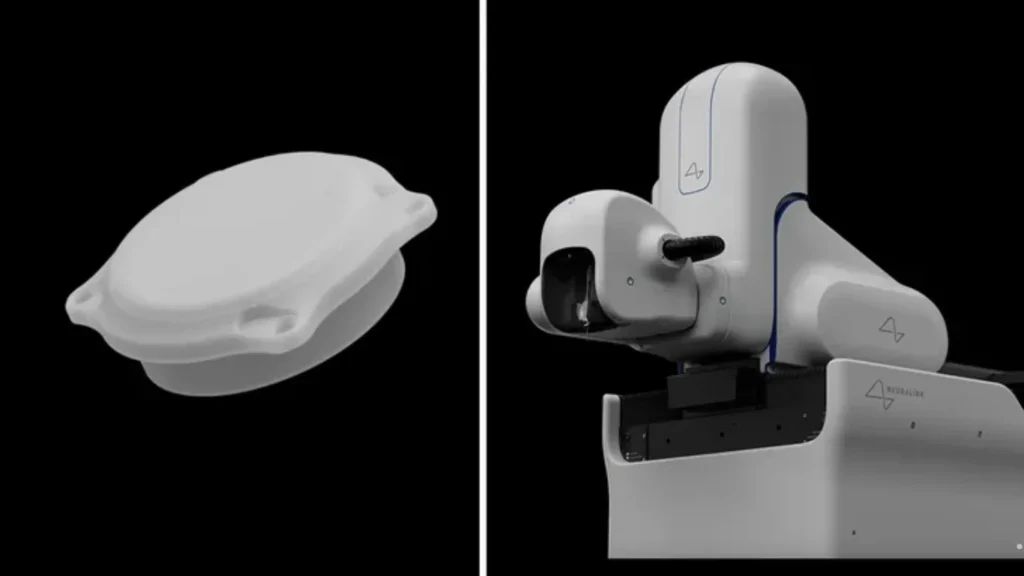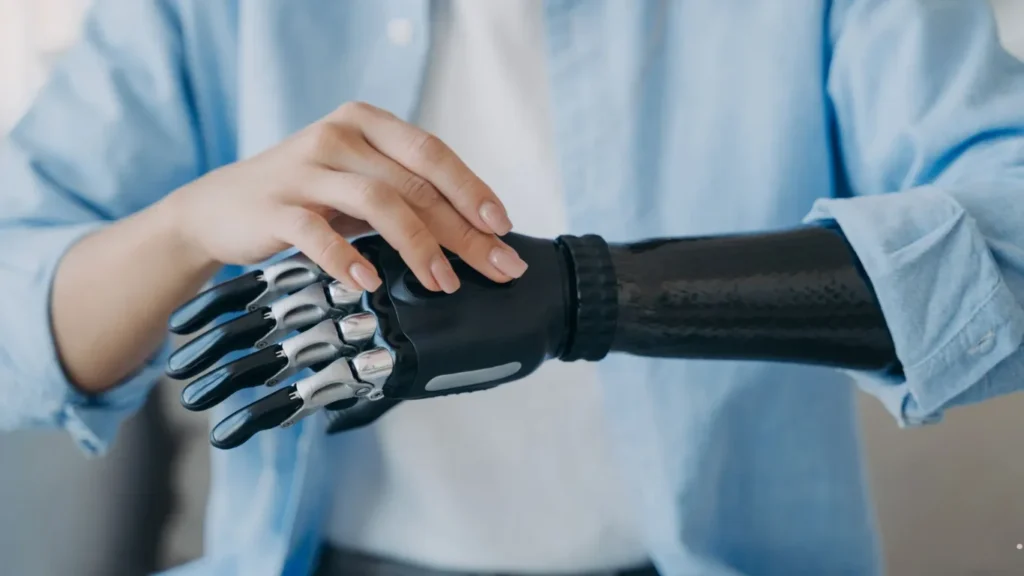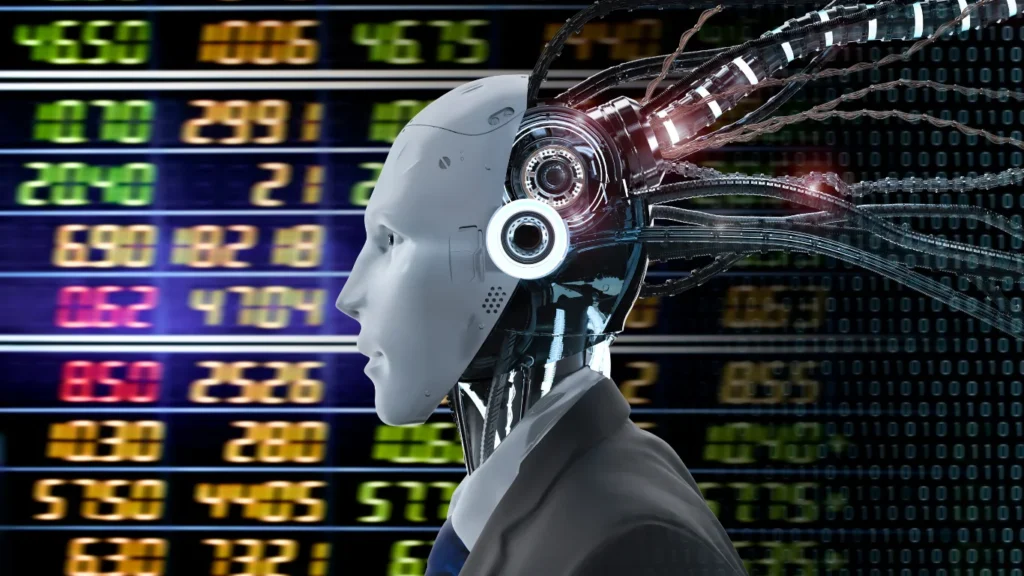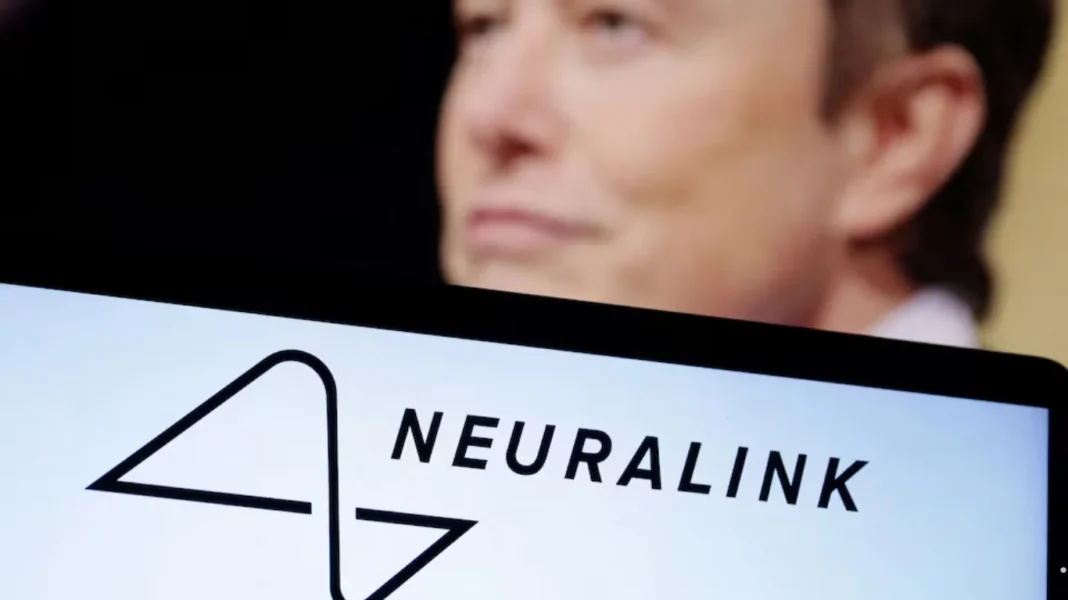Neuralink announced Tuesday morning that it is launching a test for an additional use for its famous Neuralink BCI implants. The launch will test the possibility of individuals controlling their thoughts via a robotic arm. On Musk’s social media platform, X Neuralink said, “We are excited to announce the approval and launch of a new feasibility trail to extend BCI control using the N1 implant to an investigational assistive robotic arm.”
Let’s deep dive into the important of the Brain-Computer Interface. BCI is an automated system that allows individuals to control outside devices through the waves in their brains. The interface works by reading, analyzing, and decoding movement signals via neurons before they occur. BCI works through a coin-sized device called N1. This device is inputted through a surgical procedure where a robot implants the device. Neuralink is evaluating the safety of BCI, along with other important factors.

The implant and surgical robot.
Brain-Computer Interface
Uses Over the Years
BCI has been tested over the years by many experts for many purposes. In 2008, at the University of Pittsburg, Andrew Schwartz’s team did this test with a monkey. The test revealed that a monkey could control a robotic arm through his brain to feed himself.
A few years later, in 2021, a study was published that two people paralyzed by a stroke successfully guided a robotic arm to aim for objects, grasp them, move them, and replace them solely through their thoughts.

Additionally, in 2016, a study showed that someone who hadn’t drunk coffee alone for 14 years could do so again.
In these instances, BCI was used through a cable attached to the participant’s head to a computer. The computer would then decode the signals, move the arm, and complete the task. However, this Neauralink launch is a wireless interface.
Neuralink BCI Participant

Neuralinks first BCI users, Noland Arbaugh.
Earlier this year, Neuralink showed how BCI could control the movements of a computer cursor. A video showing the performance of the Neuralink device on Noland Arbaugh was posted on Elon Musk’s social media platform X. Arbaugh was shown playing chess and other computer games using the Neuralink BCI interface.
Arbaugh was diagnosed as a quadriplegic after a tragic swimming accident in 2016. In an interview with WIRED, he explained how this implant had given him his independent back. There was a malfunction a few weeks after completing the brain surgery to receive the Neuralink implant. In a blog post, Neuralink explained that the threads that were part of the implant had retracted from the client’s brain, causing a loss of cursor control. Neuralink regained Arbaugh’s power by making its brain recording system more sensitive and altering how neural signals are translated into cursor movement. Neuralink BCI for robotic arm has the potential to alter the lives of many with disabilities, such as paralysis and more.
Learn more about the Power of AI in 2024 ,What it is and How it Works.






